Distinctive Collections
The Rare Printed Works of J. Frank Dobie
Open gallery

J. Frank Dobie, a 1910 graduate of Southwestern and Texas native, was a prolific writer on the Southwest throughout his lifetime. He turned history into literature and brought folklore to life. Most of Dobie’s works can be bought cheaply online or found at a local library, but there are some specific editions that are more unique and notable. We are lucky enough here at the Southwestern University Special Collections to have a significant number of Dobie publications that are somewhat scarce.
What makes the most notable of these truly special is the specific collaborative decisions that Dobie made for publication. It is common to pick up a book and think only of the words that the pages contain. But a book is a combination of so many more individuals, and in these exceptional volumes, those other individuals are just as influential as the author. Most notably, there are specific printers and illustrators that Dobie chose to work with often throughout his career such as Carl Hertzog and Tom Lea.
Using Jeff Dykes’ My Dobie Collection, which includes a list of rare Dobie books, as a guide, I searched our collection and was surprised by how many I found. Out of the 50 works on Dykes’ list, we have 18 here at Southwestern. I’ve included a list of those 18 publications at the end of this post, but there are a few amongst them that I would like to highlight.
First and foremost, I have to discuss the gorgeous Pinto Edition of The Mustangs. Out of 100 copies printed, we are lucky to call number 89 ours.The topic of the book is self evident in the pinto horse hide cover and offers an extremely tactile experience for anyone who picks it up. Complete with an embossed leather spine label, this edition is truly luxurious. Our copy also contains an inscription from Dobie to his student turned friend, Isabel Gaddis, which allows anyone experiencing this book to get a sense of Dobie’s personal voice.
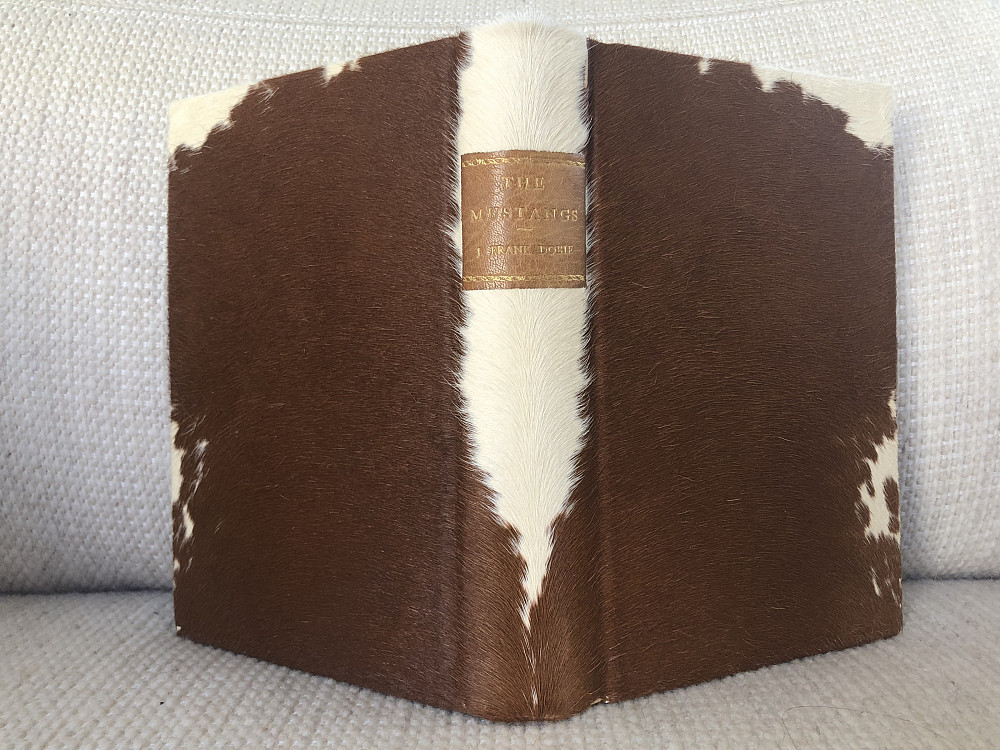
Although the cover is the only completely unique characteristic of each Pinto Edition, I can’t discuss this book without noting the Charles Banks Wilson illustrations. From half page illustrations to two page chapter openers, the drawings in The Mustangs do not disappoint. They are dynamic, dramatic, and full of movement. If you intend to read this book, I highly recommend finding a copy with the Wilson illustrations.
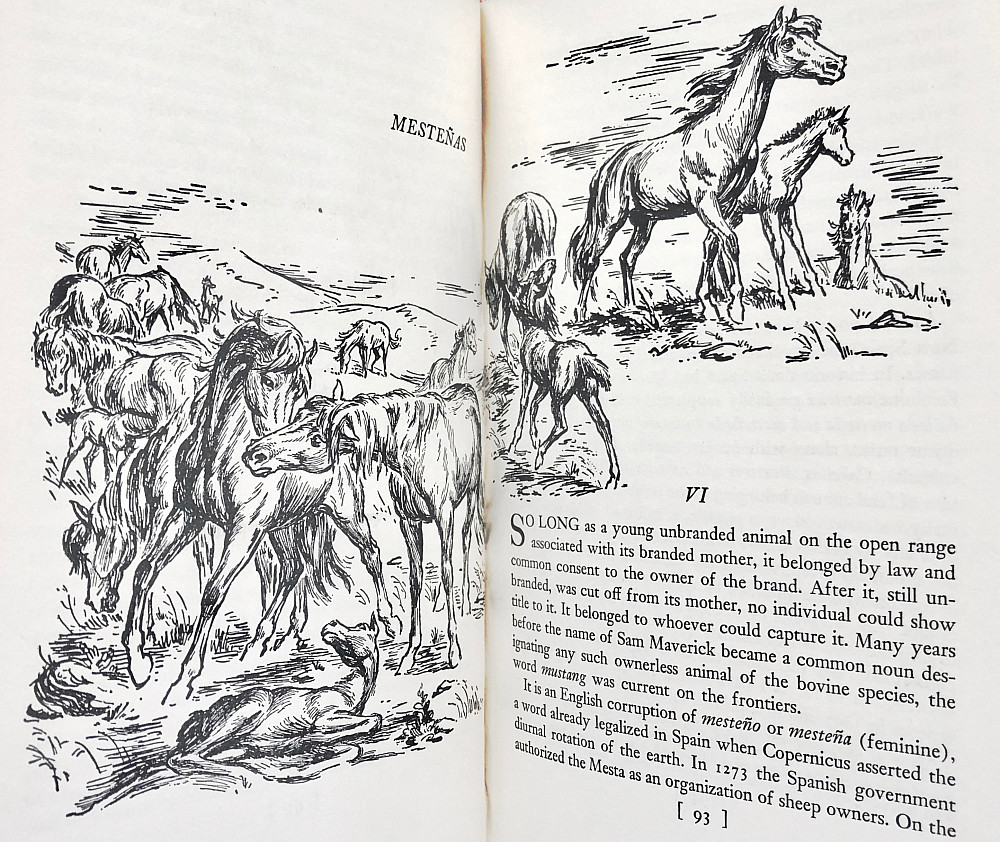
Another Dobie edition we have that includes memorable illustrations is the Sierra Madre Edition of Apache Gold & Yaqui Silver. With only 250 copies made we are lucky enough to have two at Southwestern. However, included in only one copy is an envelope with paintings by Tom Lea for the book reproduced by offset lithography. These fully colored images bring the dramatic landscape and characters to life. In searching for other copies of this particular edition, I could not find another listing that included these extra lithography reproductions. Whether it is unique to our copy or not is unclear, but it is certainly not included in all Sierra Madre editions. Also in our collection is an original Lea sketch from the book that was given to Dobie from the artist himself.
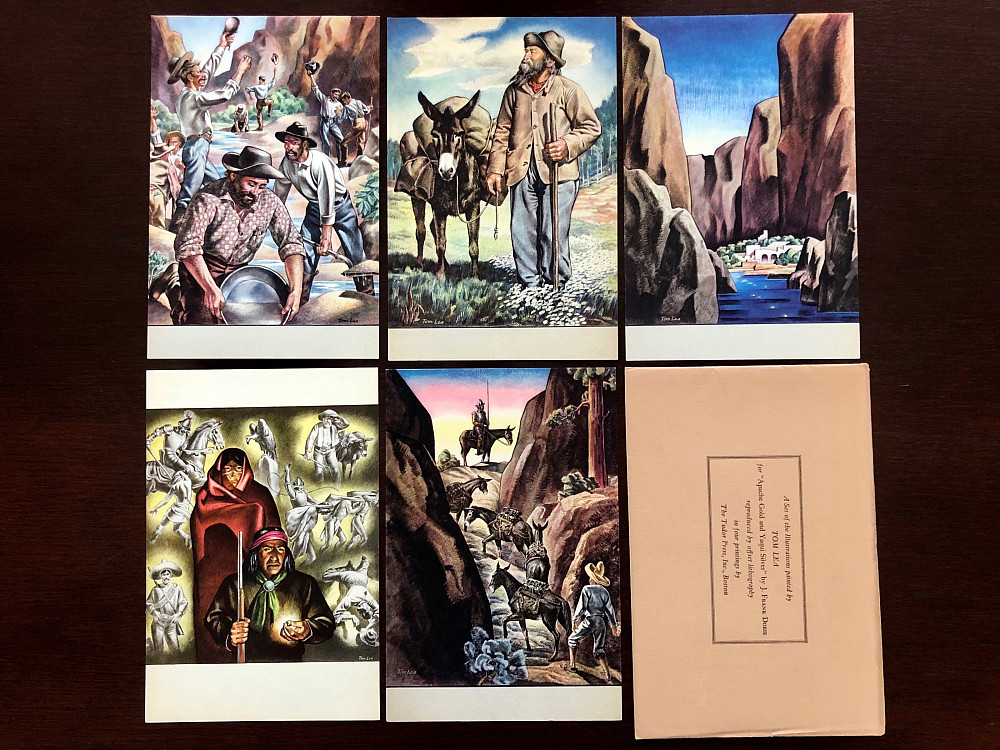

Some of the rarities listed by Dykes were Christmas remembrances sent out by Dobie and his wife, Bertha. Perhaps the most notable one we have in our collection is The Mezcla Man, designed and printed by Carl Hertzog.
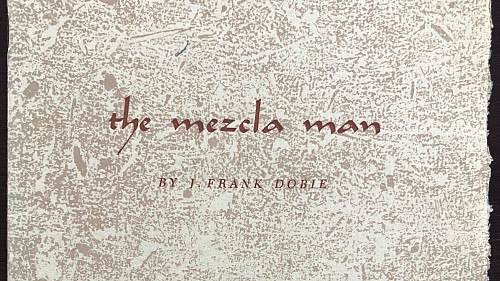
A master of printing, Hertzog worked out of El Paso and printed a number of Dobie publications. This one, printed for Christmas of 1954 includes an interesting cover design created by making a print out of the adobe bricks of the Southwest. The Mezcla Man also highlights the simple, yet arresting style of Hertzog’s printing design.
In addition to these collaborations, it is significant to discuss those who chose to carry on Dobie’s legacy after his passing in 1964. Although of course his writing has been reprinted countless times in the last half a century, certain fine press editions are more unique. For example, Encino Press in Austin chose to print some of Dobie’s works postmortem. The two we have in our collection are Carl Sandburg & Saint Peter at the Gate and Bob More: Man and Bird Man. Both printed in a clean and engaging style, notable elements include an introduction by Bertha Dobie and photographs of Dobie and Sandburg in Carl Sandburg & Saint Peter and William D. Wittliff’s design and introduction in Bob More.
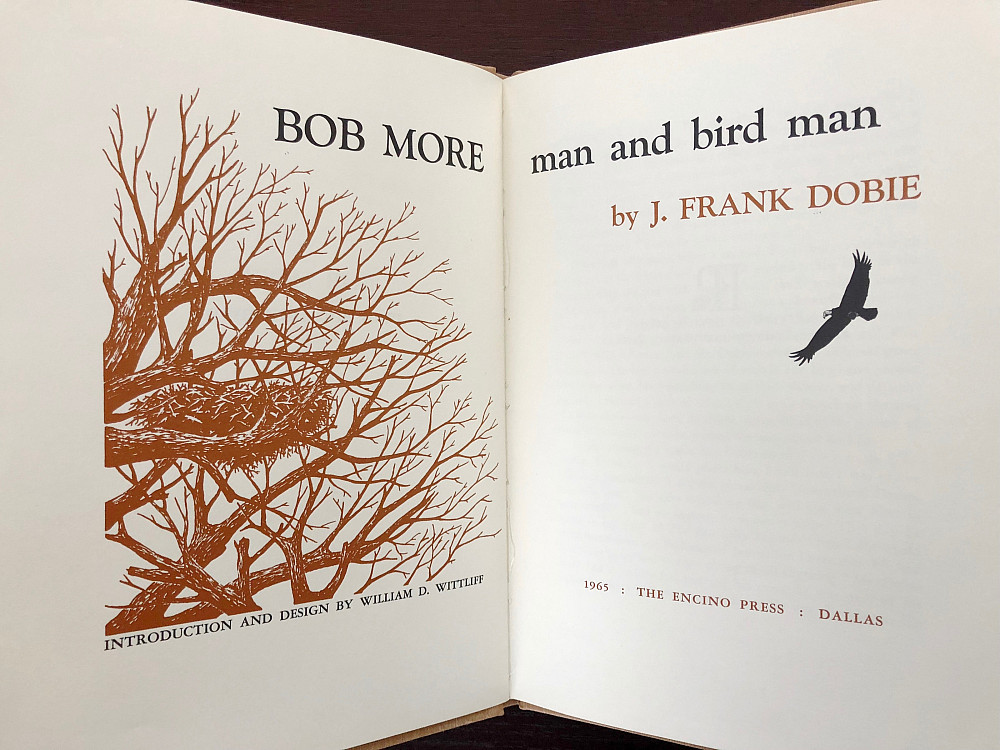
There is something in all of these scarce editions that are in harmony with Dobie’s love of the way of life in the Southwest and the nature that encapsulates it. Perhaps the sentiment that carries through all his writing is best stated in his own words. As he expresses in his 1953 essay, Whatever Makes Me Feel Big:
No hymn lifts my heart higher than the morning call of the bobwhite or the long fluting cry of sandhill cranes out of the sky at dusk. I have never smelled incense in a church as refining to the spirit as a spring breeze laden with aroma from a field of bluebonnets. Not all hard truths are beautiful, but beauty is truth. It incorporates love and is incorporated by love. It is the goal of all great art.
Notable Dobie Editions in the Southwestern Special Collections
By J. Frank Dobie
- “J.C. Duval: First Texas Man of Letters” by J. Frank Dobie, ‘with sketches by’ Tom Lea; 1939 edition of 1,000 copies printed by Southwest Review in Dallas
- “Picthing [sic] Horses and Panthers” by J. Frank Dobie, signed; 1940 edition from the Texas Folk-Lore Society, Austin
- “Seven Mustangs” by J. Frank Dobie; 1948 Christmas remembrance printed by Adams Publications in Austin
- “The Mezcla Man” by J. Frank Dobie; Christmas 1954, designed and printed by Carl Hertzog
- “The Mustangs” by J. Frank Dobie, illustrated by Charles Banks Wilson; signed by author and illustrator; 100 Pinto Edition copies printed by Little, Brown and Company in 1952
- “Apache Gold & Yaqui Silver” by J. Frank Dobie, illustrated by Tom Lea; signed by author and illustrator; 250 Sierra Madre Edition printed by Little, Brown and Company in 1939
- “Juan Oso, Bear Nights in Mexico” by J. Frank Dobie; 250 copies of 1933 Christmas remembrance printed by Boyd Print Co. in Dallas
- “Carl Sandburg & Saint Peter at the Gate” by J. Frank Dobie, introduction by Bertha Dobie; 750 copies of the 1966 edition printed by The Encino Press in Austin
- “Bob More: man and bird man” by J. Frank Dobie; 550 copies of the 1965 edition printed by The Encino Press, Austin
Contribution by J. Frank Dobie
- “Mustangs and Cow Horses” edited by J. Frank Dobie, Mody C. Boatright, and Harry H. Ransom; 1940 edition from the Texas Folk-Lore Society
- “The LIttle World Waddies” by Eugene Manlove Rhodes, introduction by J. Frank Dobie, illustrated by Harold Bugbee; 1,000 copies made of 1946 edition designed and printed by Carl Hertzog
- “A Tenderfoot Kid on Gyp Water” by Carl P. Benedict, under general editorship of J. Frank Dobie; 550 copies of 1943 edition designed and printed by Carl Hertzog
- “Lead Steer and Other Tales” by Jack Potter, introduction by J. Frank Dobie; 1939 edition printed by Leader Press
About J. Frank Dobie
- “I Have That Honor: Tributes to J. Frank Dobie” by Frank H. Wardlaw; 500 copies of the 1965 edition printed by The Congressional Press
- “Frank Dobie: Man and Friend” by Ralph W. Yarborough, introduction by Jeff Dykes; 250 copies of the 1967 edition printed by The potomac Corral of the Westerners
- “J. Frank Dobie: The Makings of an Ample Mind” by Lon Tinkle; 850 copies of the 1968 edition printed by The Encino Press, Austin
- “Notes from a Bookman” by Herbert Faulkner West; 399 copies of 1968 edition Westholm Publications
-
“A Portrait of Pancho” by Winston Bode; 150 copies of the 1965 edition printed by The Pemberton Press in Austin
– Anne Sorenson














